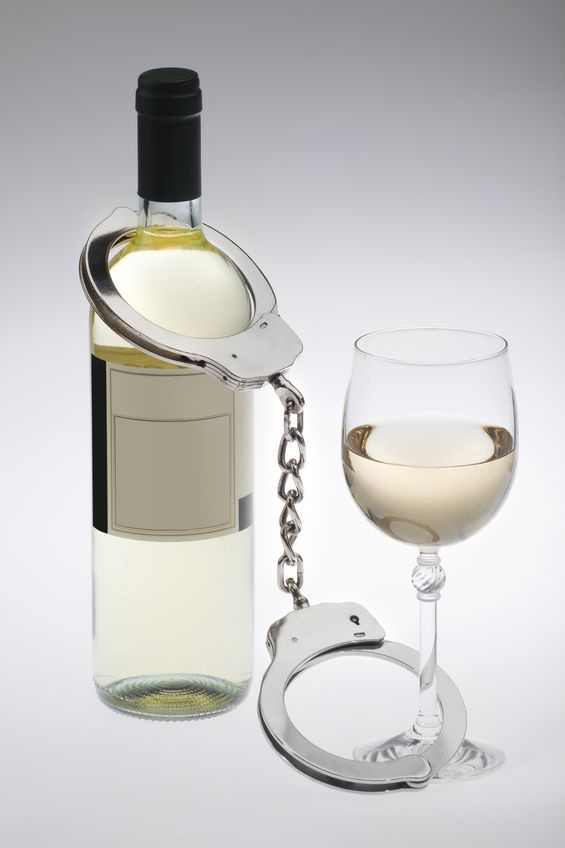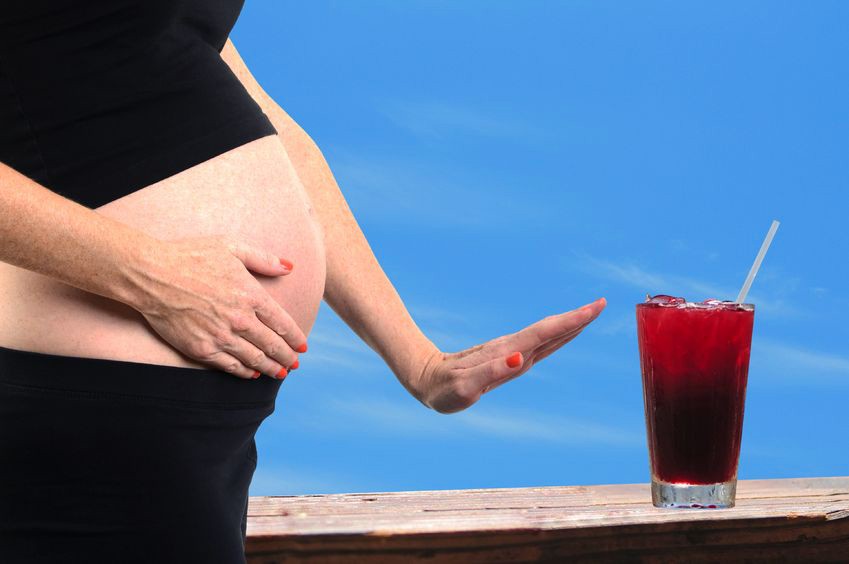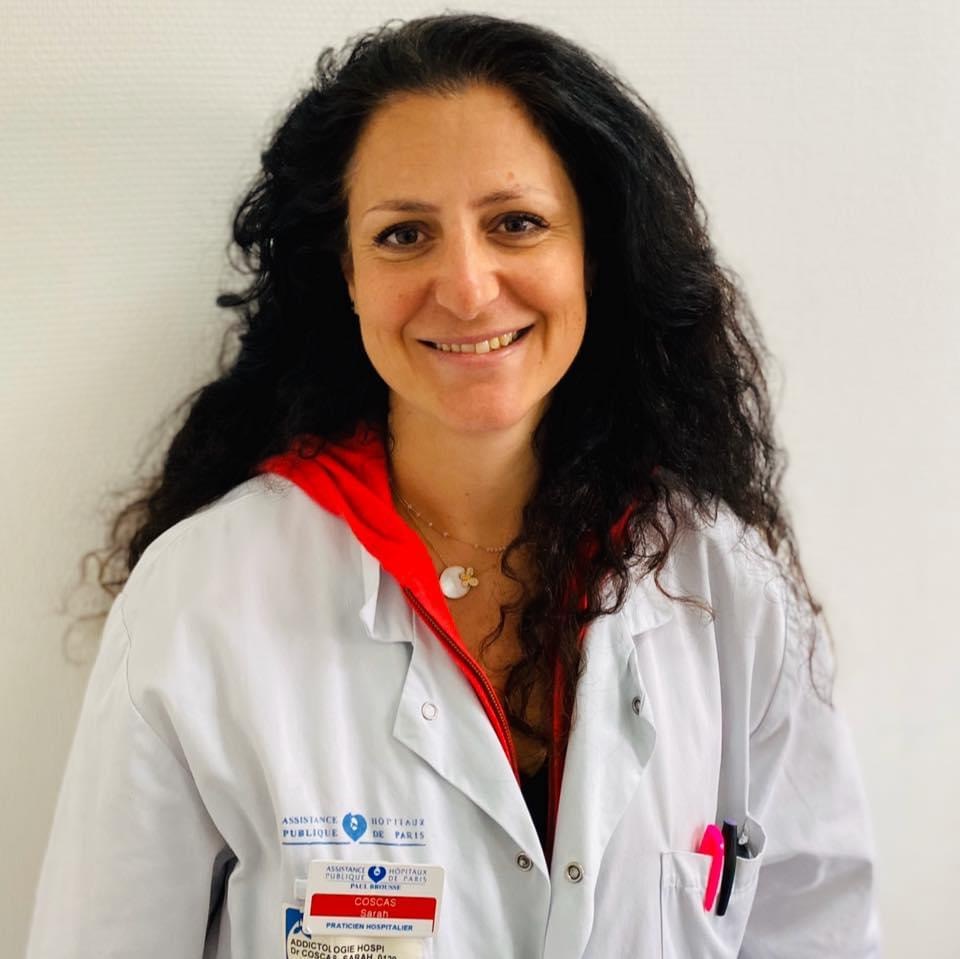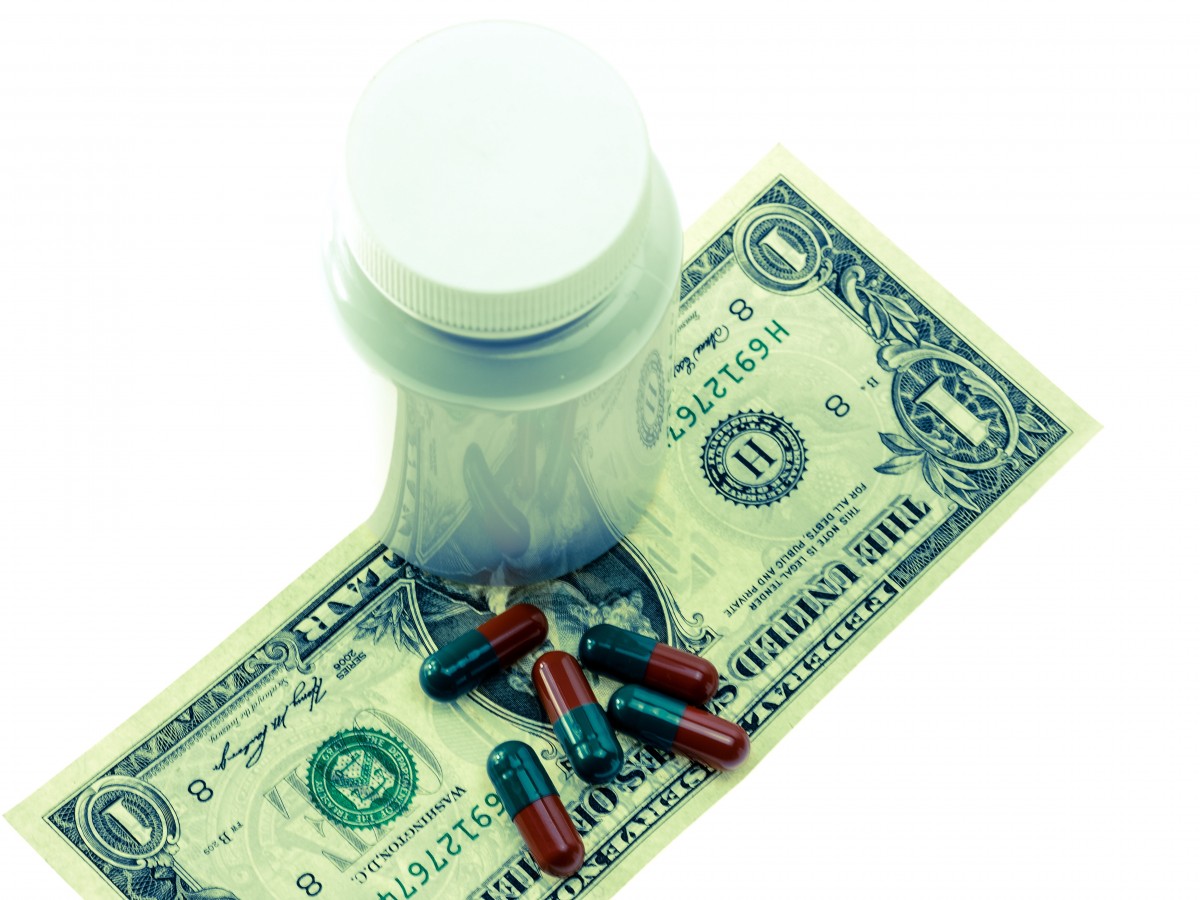A timeless current topic that concerns a population without age limits, addiction is characterized by the repeated inability to control a behavior or the consumption of substances but also the continuation of this behavior despite knowledge and its negative consequences.
The term addictology is often borrowed for ubiquitous purposes. We know today that it is a recognized neurobiological disease in our hospitals, in specialized services, where patients receive real treatment.
Sarah, an addiction psychiatrist at the Paul-Brousse AP-HP hospital in Paris, talks to us today about this loss of control and the damage it causes.
A timeless current topic that concerns a population without age limits, addiction is characterized by the repeated inability to control a behavior or the consumption of substances but also the continuation of this behavior despite knowledge and its negative consequences.
The term addictology is often borrowed for ubiquitous purposes. We know today that it is a recognized neurobiological disease in our hospitals, in specialized services, where patients receive real treatment.
Sarah, an addiction psychiatrist at the Paul-Brousse AP-HP hospital in Paris, talks to us today about this loss of control and the damage it causes.

| Frequence Juive : "How do you know if someone is an addict? When to talk about illness? » Sarah: "The term addiction is trivialized and is used in songs, in marketing to sell food or in everyday life, when it is a real disease. It is a young discipline recognized worldwide under the term addiction for more than twenty years. This discipline suffers from the image of this disease which is often seen as a vice, a perverse side, a defect or a lack of will. Of course the first consumptions are voluntary and at a more or less young age depending on the person, but when the disease sets in there is a loss of control, that is to say that despite the will, the person is unable not to consume when she decides. We are addicted if we are not able to stop consuming a psychoactive substance (alcohol, tobacco, cannabis, heroin, codeine, cocaine, etc. | Frequence Juive : "How do you know if someone is an addict? When to talk about illness? » Sarah: "The term addiction is trivialized and is used in songs, in marketing to sell food or in everyday life, when it is a real disease. It is a young discipline recognized worldwide under the term addiction for more than twenty years. This discipline suffers from the image of this disease which is often seen as a vice, a perverse side, a defect or a lack of will. Of course the first consumptions are voluntary and at a more or less young age depending on the person, but when the disease sets in there is a loss of control, that is to say that despite the will, the person is unable not to consume when she decides. We are addicted if we are not able to stop consuming a psychoactive substance (alcohol, tobacco, cannabis, heroin, codeine, cocaine, etc. |
| ) or practicing a behavior (gambling, video game, sexuality) and that negative consequences persist (physical or mental health problem, marital conflicts, professional, legal, financial consequences, etc.) for a minimum period of one year. We cannot speak of addiction if it is not a psychoactive substance or a behavior recognized as being addictive. The denial of the disease is a major brake because this disease begins with a substance that provides pleasure and then the negative consequences become more important. Initially, the patient consumes to feel good, then when the disease sets in, he consumes to avoid harm. » “One is addicted if one is unable to stop using a psychoactive substance or practicing a behavior” F.J.: “Which products are problematic? » Sarah: “Psychoactive substances (acting on the psyche) have the potential to cause an addictive disease. These substances have in common to cause pleasure more or less quickly depending on the substance, the quantity consumed, the quality (degree of alcohol for example) and the mode of consumption (smoked, ingested, snorted, injected, etc.) . First, alcohol and tobacco are the most commonly used substances and are the most deadly. The addictive disease sets in more or less quickly depending on the substance and the individual. Cocaine and heroin are known, for example, to be very addictive substances, i.e. the disease sets in very quickly (a few weeks) compared to alcohol (several years). Each substance has its legal or illegal risks; cardiac (cocaine) or hepatic (alcohol) or pulmonary (tobacco) risk for example. Cannabis (marijuana) is very widespread, being the most consumed illicit substance. It has the image of a "light drug" because the consequences are slow while there is a real psychiatric, neurological, or pulmonary risk... Not everyone becomes addicted. This is the encounter between a product with its own risk factors (medical, legal risks, etc.) and an individual with its own risk factors (genetics, physical and psychological health, age, etc.) in a particular environment (friends who consume, spouse, profession, etc.). The image of substances is often a barrier to access to care. Alcohol, for example, is seen as a party-necessary substance with a very positive image for which one should not look like the "alcoholic" who has a very negative image. People with an alcohol problem then find it difficult to consult. » "Alcohol is seen as a party essential with a very positive image" F.J.: "What difference is there between a patient who is an actor in his illness and one who is forced to treat himself, constrained by his entourage? » Sarah: "It is of course better prognosis to consult voluntarily for 'intrinsic' motivations such as concerns for one's health and by the negative consequences of substance use. Some consult under pressure from their family, their employer or the courts. It is then a less good prognosis, but it is a good opportunity to meet a doctor. It is fundamental that the entourage can set limits that will help the patient find the motivation to change his behavior. The patient changes when the negative consequences outweigh the pleasure from the substance. Limits imposed by the family can be a positive trigger for inducing care. "The patient changes when the negative consequences outweigh the pleasure of the substance" FJ: "Can we say that it is because of psychological suffering, a need for pleasure, a denial, that the patient has become addicted to the drug he is consuming, or should we speak, in the patient, of a neurobiological dysfunction in the first place? » Sarah: “There are risk factors for becoming an addict such as certain personality traits (anxiety, impulsivity, intolerance to frustration…) but also certain psychiatric pathologies (depression, anxiety disorders…). Trauma (violence, sexual abuse, etc.) are very frequent contributing factors, especially among women. There would be genetic elements that would favor the installation of the disease in certain families without there being an addiction gene today. It is the encounter of a product on an individual at risk who will develop the disease. » F.J.: “What do you think the patient is looking for in the product that makes them feel good? » Sarah: “Psychoactive substances have the particularity of having a psychological effect, in particular anxiolytic, which also provides a lot of pleasure and this very quickly and promotes the onset of the disease. This feeling of well-being uses the same circuits in the brain as the pleasure that one can have by doing good by eating, by playing sports or by having any activity that gives pleasure. Patients often seek to soothe discomfort, to relax artificially or to fall asleep quickly, for example. | ) or practicing a behavior (gambling, video game, sexuality) and that negative consequences persist (physical or mental health problem, marital conflicts, professional, legal, financial consequences, etc.) for a minimum period of one year. We cannot speak of addiction if it is not a psychoactive substance or a behavior recognized as being addictive. The denial of the disease is a major brake because this disease begins with a substance that provides pleasure and then the negative consequences become more important. Initially, the patient consumes to feel good, then when the disease sets in, he consumes to avoid harm. » “One is addicted if one is unable to stop using a psychoactive substance or practicing a behavior” F.J.: “Which products are problematic? » Sarah: “Psychoactive substances (acting on the psyche) have the potential to cause an addictive disease. These substances have in common to cause pleasure more or less quickly depending on the substance, the quantity consumed, the quality (degree of alcohol for example) and the mode of consumption (smoked, ingested, snorted, injected, etc.) . First, alcohol and tobacco are the most commonly used substances and are the most deadly. The addictive disease sets in more or less quickly depending on the substance and the individual. Cocaine and heroin are known, for example, to be very addictive substances, i.e. the disease sets in very quickly (a few weeks) compared to alcohol (several years). Each substance has its legal or illegal risks; cardiac (cocaine) or hepatic (alcohol) or pulmonary (tobacco) risk for example. Cannabis (marijuana) is very widespread, being the most consumed illicit substance. It has the image of a "light drug" because the consequences are slow while there is a real psychiatric, neurological, or pulmonary risk... Not everyone becomes addicted. This is the encounter between a product with its own risk factors (medical, legal risks, etc.) and an individual with its own risk factors (genetics, physical and psychological health, age, etc.) in a particular environment (friends who consume, spouse, profession, etc.). The image of substances is often a barrier to access to care. Alcohol, for example, is seen as a party-necessary substance with a very positive image for which one should not look like the "alcoholic" who has a very negative image. People with an alcohol problem then find it difficult to consult. » "Alcohol is seen as a party essential with a very positive image" F.J.: "What difference is there between a patient who is an actor in his illness and one who is forced to treat himself, constrained by his entourage? » Sarah: "It is of course better prognosis to consult voluntarily for 'intrinsic' motivations such as concerns for one's health and by the negative consequences of substance use. Some consult under pressure from their family, their employer or the courts. It is then a less good prognosis, but it is a good opportunity to meet a doctor. It is fundamental that the entourage can set limits that will help the patient find the motivation to change his behavior. The patient changes when the negative consequences outweigh the pleasure from the substance. Limits imposed by the family can be a positive trigger for inducing care. "The patient changes when the negative consequences outweigh the pleasure of the substance" FJ: "Can we say that it is because of psychological suffering, a need for pleasure, a denial, that the patient has become addicted to the drug he is consuming, or should we speak, in the patient, of a neurobiological dysfunction in the first place? » Sarah: “There are risk factors for becoming an addict such as certain personality traits (anxiety, impulsivity, intolerance to frustration…) but also certain psychiatric pathologies (depression, anxiety disorders…). Trauma (violence, sexual abuse, etc.) are very frequent contributing factors, especially among women. There would be genetic elements that would favor the installation of the disease in certain families without there being an addiction gene today. It is the encounter of a product on an individual at risk who will develop the disease. » F.J.: “What do you think the patient is looking for in the product that makes them feel good? » Sarah: “Psychoactive substances have the particularity of having a psychological effect, in particular anxiolytic, which also provides a lot of pleasure and this very quickly and promotes the onset of the disease. This feeling of well-being uses the same circuits in the brain as the pleasure that one can have by doing good by eating, by playing sports or by having any activity that gives pleasure. Patients often seek to soothe discomfort, to relax artificially or to fall asleep quickly, for example. |
| "Today, everything is done so that we become addicted to it" | "Today, everything is done so that we become addicted to it" |
| » F.J.: "Why is it so important to understand this in the period of withdrawal - quitting? » Sarah: "To stop using is of course to make sure that the negative consequences stop but it is also to give up the pleasure provided by consumption. Initiating the stop is often very hard because in addition to the unpleasant withdrawal signs are added strong desires to which it is difficult to say no. » "To stop consuming is to renounce the pleasure provided by consumption" F.J.: "You who are an addictologist specializing in perinatality, tell us about what patients find pleasure in using and why they want to be weaned. » Sarah: "Women consume less than men (except for drugs) but they are not spared from the addictive disease. They often drink alone to soothe psychological suffering, while the men are more often in a group in a festive context. Women are very guilty of their consumption, which hinders them from consulting. Pregnancy is often a very strong accelerator to change behavior and in particular to stop consuming tobacco and alcohol. Unfortunately, for some, the addictive disease does not end when they are pregnant. It is essential to stop using when you have a pregnancy project and not to wait to be pregnant. » F.J.: “What does the addiction affect, besides physical health? What about the mental and social health of the patient? » Sarah: "The addictive disease affects the subject's entire life in terms of mental physical health but also socially. All psychoactive substances are depressogenic (which promote depression) and anxiogenic (which promote anxiety disorders). Substance use can have consequences at work, at home, but also financially. » F.J.: "The craving or the irresistible urge to consume, how to deal with this kind of behavior which often can remain a problem, even after withdrawal? » Sarah: "The craving will persist for many years after quitting, or even for the subject's lifetime. It is a short time that you have to learn to manage without succumbing to the urge to make it shorter. As one learns to manage an anxiety attack, it is necessary to learn to have a personalized "emergency plan" to avoid using. » F.J.: “Are there levels of addiction, according to the patients? » Sarah: “We talk about moderate to severe use disorder depending on the severity of the consequences of use. » F.J.: “How is the clinical assessment of your patients composed? » Sarah: "We will evaluate the subject with its particularities (sex, age, profession, background...) who consumes a product with its specificities (legal, health, price...) and the current consequences of these consumptions. » F.J.: “How do you help your patients? Is it the same therapy for a tobacco smoker, an alcoholic, a cracker? » Sarah: “You have to assess each situation specifically. There are similarities but we have things to look for depending on the addiction. Each substance has its peculiarities. For each patient, it is necessary to assess the motivation and set up a personalized psychotherapy. » F.J.: “How do you get your patients to quit? » Sarah: "Each patient has their own reasons for changing, we help them to verbalize them and above all we try to work on the received ideas which are permissive thoughts like "alcohol helps me sleep" or "tobacco relax". » F.J.: “Pregnant women who arrive in the maternity ward have a very short period of time to stop using substances. What motivates them? Serious effects on their health and that of their baby are not enough. How do you manage to gain their trust? » Sarah: “The ideal is of course to deal with their addiction problems before they get pregnant. Pregnant women have the health of their child as their main motivation. For some, the addiction is so strong that pregnancy is not enough to help them. They are therefore often polyconsumers and very afraid to talk about their practices. It is necessary to research these consumptions in a systematic way, to help them to speak about it and especially to be very available to set up special measures in emergency. Alcohol remains the most dangerous substance whatever the dose for the unborn child. » "Today, everything is done so that we become addicted to it" F.J.: “In general, when does the patient decide to quit? » Sarah: “The patient consults when he realizes that substance use has become more of a problem than a solution. » F.J.: “What is the difference between an addiction and an urge? Can we become addicted to things that, at first glance, do not seem harmful? » Sarah: “An impulse is a psychoanalytical term to characterize a force at the limit of the organic and the psychic which pushes the subject to perform an action in order to resolve a tension coming from the organism. | » F.J.: "Why is it so important to understand this in the period of withdrawal - quitting? » Sarah: "To stop using is of course to make sure that the negative consequences stop but it is also to give up the pleasure provided by consumption. Initiating the stop is often very hard because in addition to the unpleasant withdrawal signs are added strong desires to which it is difficult to say no. » "To stop consuming is to renounce the pleasure provided by consumption" F.J.: "You who are an addictologist specializing in perinatality, tell us about what patients find pleasure in using and why they want to be weaned. » Sarah: "Women consume less than men (except for drugs) but they are not spared from the addictive disease. They often drink alone to soothe psychological suffering, while the men are more often in a group in a festive context. Women are very guilty of their consumption, which hinders them from consulting. Pregnancy is often a very strong accelerator to change behavior and in particular to stop consuming tobacco and alcohol. Unfortunately, for some, the addictive disease does not end when they are pregnant. It is essential to stop using when you have a pregnancy project and not to wait to be pregnant. » F.J.: “What does the addiction affect, besides physical health? What about the mental and social health of the patient? » Sarah: "The addictive disease affects the subject's entire life in terms of mental physical health but also socially. All psychoactive substances are depressogenic (which promote depression) and anxiogenic (which promote anxiety disorders). Substance use can have consequences at work, at home, but also financially. » F.J.: "The craving or the irresistible urge to consume, how to deal with this kind of behavior which often can remain a problem, even after withdrawal? » Sarah: "The craving will persist for many years after quitting, or even for the subject's lifetime. It is a short time that you have to learn to manage without succumbing to the urge to make it shorter. As one learns to manage an anxiety attack, it is necessary to learn to have a personalized "emergency plan" to avoid using. » F.J.: “Are there levels of addiction, according to the patients? » Sarah: “We talk about moderate to severe use disorder depending on the severity of the consequences of use. » F.J.: “How is the clinical assessment of your patients composed? » Sarah: "We will evaluate the subject with its particularities (sex, age, profession, background...) who consumes a product with its specificities (legal, health, price...) and the current consequences of these consumptions. » F.J.: “How do you help your patients? Is it the same therapy for a tobacco smoker, an alcoholic, a cracker? » Sarah: “You have to assess each situation specifically. There are similarities but we have things to look for depending on the addiction. Each substance has its peculiarities. For each patient, it is necessary to assess the motivation and set up a personalized psychotherapy. » F.J.: “How do you get your patients to quit? » Sarah: "Each patient has their own reasons for changing, we help them to verbalize them and above all we try to work on the received ideas which are permissive thoughts like "alcohol helps me sleep" or "tobacco relax". » F.J.: “Pregnant women who arrive in the maternity ward have a very short period of time to stop using substances. What motivates them? Serious effects on their health and that of their baby are not enough. How do you manage to gain their trust? » Sarah: “The ideal is of course to deal with their addiction problems before they get pregnant. Pregnant women have the health of their child as their main motivation. For some, the addiction is so strong that pregnancy is not enough to help them. They are therefore often polyconsumers and very afraid to talk about their practices. It is necessary to research these consumptions in a systematic way, to help them to speak about it and especially to be very available to set up special measures in emergency. Alcohol remains the most dangerous substance whatever the dose for the unborn child. » "Today, everything is done so that we become addicted to it" F.J.: “In general, when does the patient decide to quit? » Sarah: “The patient consults when he realizes that substance use has become more of a problem than a solution. » F.J.: “What is the difference between an addiction and an urge? Can we become addicted to things that, at first glance, do not seem harmful? » Sarah: “An impulse is a psychoanalytical term to characterize a force at the limit of the organic and the psychic which pushes the subject to perform an action in order to resolve a tension coming from the organism. |
| A consumption often comes after an urge. When a behavior occupies the whole life of the subject, he can become addictive. Comments collected by Jewish Frequency. Sarah Coscas - Addiction psychiatrist at the Paul-Brousse AP-HP Hospital in Paris - Head of the hospitalization unit for complex weaning at the Paul Brousse hospital in Villejuif - Doctor in charge of the FIDES mission - Vice-president of the pregnancy and addiction study group GEGA. | A consumption often comes after an urge. When a behavior occupies the whole life of the subject, he can become addictive. Comments collected by Jewish Frequency. Sarah Coscas - Addiction psychiatrist at the Paul-Brousse AP-HP Hospital in Paris - Head of the hospitalization unit for complex weaning at the Paul Brousse hospital in Villejuif - Doctor in charge of the FIDES mission - Vice-president of the pregnancy and addiction study group GEGA. |





















